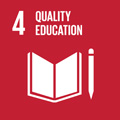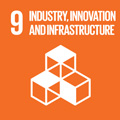- Docente: Vania Marini
- Credits: 3
- Language: English
- Teaching Mode: Traditional lectures
- Campus: Bologna
- Corso: First cycle degree programme (L) in Business and Economics (cod. 8965)
-
from Nov 11, 2024 to Dec 13, 2024
Learning outcomes
At the end of the laboratory students will be aware and knoledgable about the contents, methods and strategies to prepare their own resume (CV) and will have obtained the relational abilities that allow them to succesfully face business interviews.
Course contents
Course Contents
This laboratory offers a practical and in-depth exploration of the tools, strategies, and skills needed to successfully enter the job market. Students will learn how to read labor market trends, understand employer expectations, and navigate the evolving landscape shaped by new technologies and social media. The course covers the preparation of professional documents such as CVs, motivation and reference letters, and provides hands-on training through role plays, business cases, and group assignments. Emphasis is placed on mastering recruitment processes, improving interpersonal communication, and developing the competencies required to effectively present oneself and succeed in job interviews.
Structure of the course:
1 Job Markets Trends, Insight and Forecast
2 The importance of Company Culture and Values
3 Employability and Longlife Learning
4 Recruitment Process Outlook
5 Mid-Course Follow up
6 Business Card: My CV
7 Focus on Interview
8 The importance of Team Work
9 Personal Branding and Networking
10 Building My Value
Readings / Bibliography
Required Readings:
- Slides
There is no required textbook for this course.
The content is based on a selection of online sources from reputable websites, such as:
- Harvard Business Review
– www.hbr.org
- World Economic Forum
– www.weforum.org
- McKinsey & Company
– www.mckinsey.com
- TED Talks
– www.ted.com
- Deloitte Insights
– www.deloitte.com
- LinkedIn Talent Blog – www.linkedin.com/business/talent/blog
Authors: Various – The web sources are cited within the slides presented during the lessons and will be made available on Virtuale platform. Each source will be clearly referenced to allow for further individual exploration.
Teaching Methods
The main instructional approaches used in the course are:
- Lectures
- Group Work
- Problem-Based Learning
- Guest Speakers
Assessment MethodsThough not compulsory, class attendance and participation in team-work assignments is strongly encouraged.
- Final exam structure:
To pass the exam, you must answer at least 20 out of 30 multiple-choice questions correctly.
The two open reflection questions are optional and can serve as a bonus. The answers will be evaluated for thoughtfulness and effort. If your score is slightly below the passing threshold, strong responses to these questions may help compensate and contribute to your overall success.
- Exam policy:
Registration on AlmaEsami is mandatory for written exam sessions.
The course mark is either pass or fail.
Teaching ToolsTools, platforms, or resources used during the course:
- Learning platform: Virtuale (virtuale.unibo.it) contains the slides and the team-work assignments
- Presentation software: PowerPoint
- Communication tools: Email; Teams; Forum on Virtuale
Teaching methods
The course will employ different teaching methods: Interactive lessons, Group Works, Exercises and Managerial Talks.
Office hours
See the website of Vania Marini
SDGs



This teaching activity contributes to the achievement of the Sustainable Development Goals of the UN 2030 Agenda.
